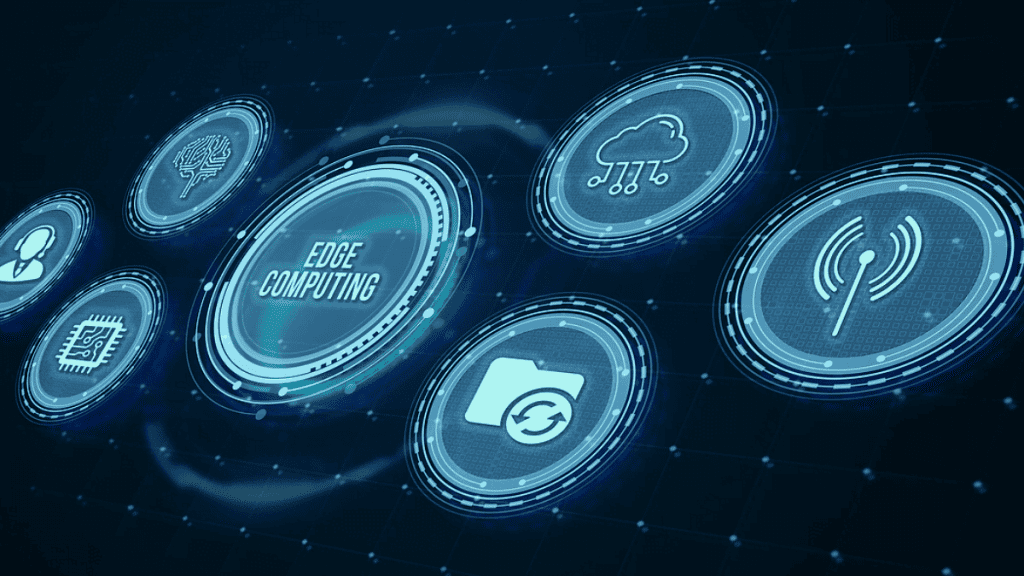Edge computing provides exciting potential, but with its promise comes the increased threat of cyberattacks. Here’s why organizations must tighten edge cybersecurity.
Table of Contents
ToggleEdge Computing Supports a Distributed Workforce
It’s now increasingly common for employees to work outside of the office. Edge computing has helped facilitate that transition. The remote working shift even means that many IT professionals are not working on-site. A recent survey of IT decision-makers from Enterprise Technology Research found that 42% of IT team members were working remotely full time. Only 27% of the respondents indicated they were back in the office for the whole workweek.
However, the organization that conducted the study also highlighted a significant rise in cyberattacks. Erik Bradley, the chief strategist at Enterprise Technology Research, said, “Cybersecurity continues to be cited as the highest priority since the pandemic, with ransomware attacks alone up 150% in 2021, and 61% of malware is targeting remote workers.”
Those are worrying statistics, especially since a study conducted elsewhere revealed that 52% of remote workers believed they could engage in riskier data-handling activities at home without getting caught. Manak Ahluwalia is the president and CEO of Aqueduct Technologies, which provides cybersecurity solutions for enterprises. He said edge computing has helped enable a vast expansion of workforces while making it more difficult to protect networks.
“Through COVID, customers have moved to a much more hybrid workforce where users are all over the world. Pre-COVID, they were able to really surround and protect their key applications and data at their own locations,” Ahluwalia explained.
He continued by explaining how it’s no longer as straightforward as an organization having well-defined boundaries to safeguard against attacks. “Their employees are coming in from the internet or on personal devices and at locations that organizations are unable to protect. The amount of bad actors that have access or try to get access is now exponentially greater…Many customers are starting to consume security at the edge.”
Edge Technology Has Changed the Computing Landscape
There has been a relatively recent convergence of information technology (IT) and operational technology (OT) networks. These efforts aim to bring physical machines to the digital realm. The related advantages include improved uptime and enhanced accuracy, particularly for machine-to-machine communications.
Edge computing plays a major role in the IT/OT convergence. It also increases the potential amount of data a successful hacker could get from a targeted organization. Rick Peters is the Rick Peters, chief information security officer of operational technology North America at Fortinet. He discussed how the move to edge computing has fundamentally altered the landscape into something beyond what IT teams have traditionally dealt with.
Speaking of the OT infrastructure, Peters said, “We’re typically talking about technology that looks a lot different than what you run into for IT. The legacy technology hardware [and] software that you encounter almost looks a bit more primitive, yet much of it is being modernized. This whole concept of digitizing at the edge is changing and growing what we consider to be or what constitutes the OT enterprise.”
He explained that other challenges stem from company leaders’ desire to gather as much data as possible to improve operations. “Today, it’s all about increased bandwidth and increased appetite for data,” Peters confirmed. “It really is the commodity of interest.”
He continued, Unfortunately, it’s the commodity of interest from two parties: the company that’s trying to make decisions to be able to pivot their decisions quickly, to be able to optimize their business processes, maybe even [improve] maintenance processes, but at the same time, you’ve got a whole other layer of activity that we’ll characterize as the bad actor who’s also interested in that data for a variety of purposes.”
Edge Devices Are Deployed in Diverse, and Often Isolated, Locations
Edge devices can bring connectivity to numerous locations, including remote ones. That’s a significant advantage in industries like oil and gas because smart sensors can give company leaders field data in real time. Then, they can react more quickly if things go wrong. The alternative was perhaps not knowing that issues existed for days or weeks due to the timespan between in-person checks.
However, putting edge devices in remote locations also increases the challenges of keeping those devices secure. Dave McCarthy focuses on edge computing strategies in his role as a research director with IDC’s worldwide infrastructure practice. He explained, “Instead of securing a majority of resources in a handful of core locations, the distributed nature of edge computing means that infrastructure, data and applications could be spread across hundreds or thousands of locations.”
McCarthy continued, “To amplify this concern, these edge locations often lack local IT staff and do not share the same physical security as their data center counterparts. Edge locations range from remote offices to places like factories, warehouses, retail stores and schools.”
Matt Hathaway is the vice president of product marketing at Imperva. He noted that edge devices have caused decreased network visibility. “Digital transformation is driving more and more applications to the edge, and with that movement, businesses are losing visibility into what is actually happening on the network, especially where edge operation occurs. Gaining visibility allows cybersecurity professionals to get a better understanding of what is actually happening at the edge.”
Fortunately, platforms and solutions exist that can restore that visibility. For example, you could direct edge traffic to a security incident event management (SIEM) tool or similar option for analysis. Monitoring platforms also help security teams confirm the location and status of all edge devices.
Edge Cybersecurity Is a Necessity
This overview shows why company decision-makers should not seriously consider increasing their usage of edge computing without strengthening cybersecurity before, during and after the deployment. Edge computing technologies offer exciting possibilities, but they’re also targets for malicious attackers.




